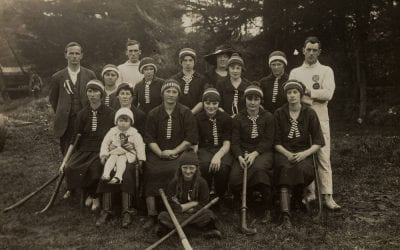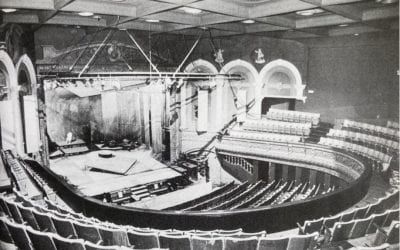AHI Summer Research Scholarships
Research Articles
The Survival of Women’s Sport in Auckland
Part Five The Survival of Women’s Sport in Auckland Part One Auckland’s Sportswomen: a Conduit for Social TensionPart Two An Uphill Climb for Women’s Cricket in AucklandPart Three The Rise of Marching in Auckland: A Healthy Sport for Girls or Hidden Militarism?Part...
Marching: Aesthetics and Uniformity
Part Four Marching: Aesthetics and UniformityPart One Auckland’s Sportswomen: a Conduit for Social TensionPart Two An Uphill Climb for Women’s Cricket in AucklandPart Three The Rise of Marching in Auckland: A Healthy Sport for Girls or Hidden Militarism?Part Five The...
The Rise of Marching in Auckland: A Healthy Sport for Girls or Hidden Militarism?
Part Three The Rise of Marching in Auckland: A Healthy Sport for Girls or Hidden Militarism?Part One Auckland’s Sportswomen: a Conduit for Social TensionPart Two An Uphill Climb for Women’s Cricket in AucklandPart Four Marching: Aesthetics and UniformityPart Five The...
An Uphill Climb for Women’s Cricket in Auckland
Part Two An Uphill Climb for Women’s Cricket in Auckland Part One Auckland’s Sportswomen: a Conduit for Social TensionPart Three The Rise of Marching in Auckland: A Healthy Sport for Girls or Hidden Militarism?Part Four Marching: Aesthetics and UniformityPart Five The...
Auckland’s Sportswomen: a Conduit for Social Tension
by Katia Kennedy*
Women’s sport has long been a subject of contention. Since the late 1880s, Auckland sportswomen have faced backlash, criticism and a general lack of support within their chosen sports. Where women’s sports have developed immensely since then, women’s involvement in male-dominated sports remained contentious.
“If You Would Be an Actress”: Auckland Women’s Personal Experiences of the Pressures of an Acting Career
Part Five “If You Would Be an Actress”: Auckland Women’s Personal Experiences of the Pressures of an Acting CareerPart One The Rise of Professional Theatre in AucklandPart Two Auckland Acting Women’s Experiences within Early Professional Theatre CompaniesPart Three...
Feminist Theatre Takes the Stage in 1980s Auckland
Part Four Feminist Theatre Takes the Stage in 1980s AucklandPart One The Rise of Professional Theatre in AucklandPart Two Auckland Acting Women’s Experiences within Early Professional Theatre CompaniesPart Three Cultural Conflicts and Evolutions in Late 1960s-1980s...
Cultural Conflicts and Evolutions in Late 1960s-1980s Auckland Theatre
Part Three Cultural Conflicts and Evolutions in Late 1960s-1980s Auckland TheatrePart One The Rise of Professional Theatre in AucklandPart Two Auckland Acting Women’s Experiences within Early Professional Theatre CompaniesPart Four Feminist Theatre Takes the Stage in...
Auckland Acting Women’s Experiences within Early Professional Theatre Companies
Part Two Auckland Acting Women’s Experiences within Early Professional Theatre CompaniesPart One The Rise of Professional Theatre in AucklandPart Three Cultural Conflicts and Evolutions in Late 1960s-1980s Auckland TheatrePart Four Feminist Theatre Takes the Stage in...
The Rise of Professional Theatre in Auckland
by Anna McCardle*
This first article will consider the rise of professional theatre in late 1960s to early 1970s Auckland. I will track the progress of how a national call for professionalisation in New Zealand theatre set the wheels of change in motion here, resulting in the emergence of Auckland professional theatre companies like Mercury Theatre and Theatre Corporate.
1940s Fashion in Auckland, New Zealand
Part Three 1940s Fashion in Auckland, New ZealandPart One 1930s Fashion in Auckland, New ZealandPart Two 1930s Fashion in Auckland, New Zealandby Caitlin Kilpatrick* “A bewildered follower of fashion might well ask, “What on earth have they in store for us next?” This...
1930s Fashion in Auckland, New Zealand
Part Two 1930s Fashion in Auckland, New ZealandPart One 1930s Fashion in Auckland, New ZealandPart Three 1940s Fashion in Auckland, New Zealandby Caitlin Kilpatrick* “It is always being dinned into our ears that New Zealand women are among the worst dressed in the...


